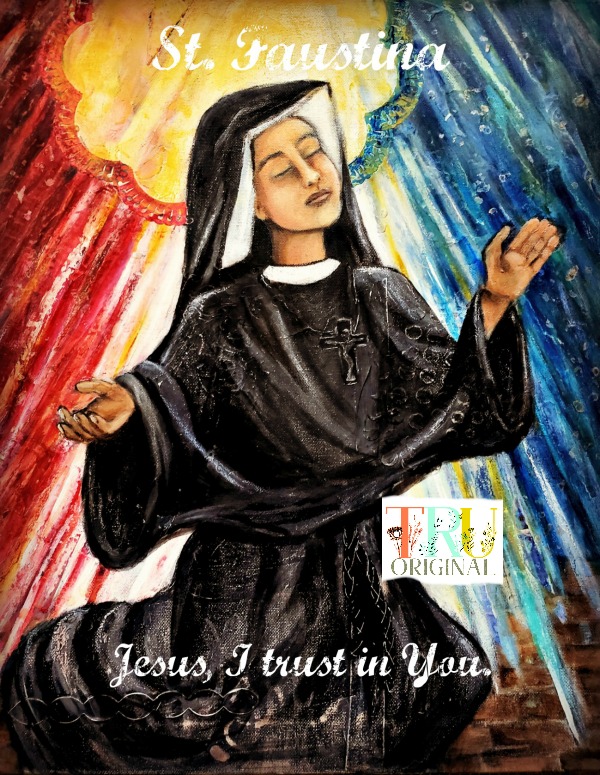October’s Saint Of the Month
Saint Faustina! The Apostle of Mercy!!

Helena Kowalski was born on August 25, 1905 and was the third of ten children of a peasant family who lived in Glogowiec, Poland. She was simple, uneducated, and devoutly Catholic. During her childhood she practiced acts of devotion, had a love for prayer, hard work, obedience and was very sensitive to human suffering. At the age of 7 she began to sense God’s call to the religious life. At the age of sixteen she left her family home for a nearby city where she worked as a servant to support herself and to help her poor parents. During this period the desire to join a convent was gradually growing inside her. Since her parents were against it, young Helena tried to deaden God’s call but it only grew stronger.
Finally at the age of 20, she set off to join a convent. She knocked on numerous convents’ doors, but with no one wanted Helena. On August 1, 1925, she applied to the Congregation of the Sisters of Our Lady of Mercy, and she was accepted. Helena entered the Congregation of Sisters of Our Lady of Mercy. She took the name Faustina and was assigned to domestic service.
On the evening of February 22, 1931, Jesus appeared to St. Faustina. He wore a white robe, and two rays, one white and one red, flowed from his breast. The red rays represented the Blood of Christ which saved our souls. The white rays represent the Baptismal water that washed away our sins. In this and in over 80 visions, Christ directed Faustina to spread the devotion of the Divine Mercy. He instructed her to make a painting of his image with the words Jesus, I trust in You and He promised that anyone who honored it would be saved. Jesus also told Faustina that he wanted the whole church to celebrate the first Sunday after Easter as the Feast of Mercy. Faustina’s first efforts to share this devotion with others were very hard and not many believed her. She also had a very hard time finding someone to paint the image of Jesus and even tried to draw it herself. However, after 1933, with the aid of her spiritual director, Father Michael Sopocko, she found an artist and made good but slow progress in sharing the devotion with others.
Jesus wanted Saint Faustina to write a diary so that others would come to know and trust Him. She did this despite the fact that she could hardly write at all. The diary was later published under the title Divine Mercy in My Soul: The Diary of St. Faustina. This Diary gives us a very good look into Faustina’s struggles in answering God’s call to this important work of mercy.
By 1935 thousands in Poland were participating in the Divine Mercy movement. In 1936 Saint Faustina became seriously ill and spent most of her days reciting the Chaplet of Divine Mercy and praying for the conversion of sinners. After a long battle with tuberculosis Faustina died on October 5th 1938. After her death the Divine Mercy devotion has grown steadily. With the support of Pope John Paul II, Faustina was beatified on April 18, 1993 and canonized on April 30, 2000. Divine Mercy Sunday is celebrated the Second Sunday of Easter throughout the entire Church. Saint Faustina Kowalski… pray for us!
This is a wonderful video about St Faustina and praying the Divine Mercy Chaplet…take a look and get out your rosaries to pray along.
